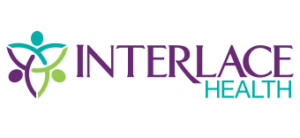3 Benefits of Interlace Health’s Patient Intake Solution

Digital patient intake solutions are making significant changes in healthcare. Here are three ways this process benefits healthcare organizations.
While the past year has changed many aspects of the healthcare industry, it hasn’t changed the fact that healthcare organizations still have to gather patient information before they can provide care. Patient intake is just as necessary and important as before the explosion of telehealth visits. These organizations have found ways to gather this critical patient information from anywhere — not just in the waiting room.
Healthcare providers have historically relied on paper processes for this. Unfortunately, those processes present a unique set of challenges: waste elimination, inefficiency, increased costs, and lost or incorrect information. Fortunately, technological advancements have created a better way. In recent years, remote patient intake solutions have helped healthcare organizations bolster operations and improve the overall care experience.
That said, some health systems have hesitated to adopt digital solutions. In many cases, they think it’s more practical to stick with what has been working rather than adopt entirely new ways of doing certain things. When the pandemic began, however, even health systems that had been hesitant to adopt digital solutions and move away from a reliance on paper had to pivot in a hurry. Telehealth’s growth enabled providers to continue offering care in a time of distancing and isolation when the need for remote care was high. As a result, the need for other digital solutions (e.g., remote patient intake) also increased.
The Interlace Health Difference
For health systems considering moving away from paper processes and integrating digital solutions with their EHRs, our remote patient intake solution offers three major benefits:
1. Contactless capabilities
While the safety of both healthcare professionals and their patients has always been top of mind, it has become even more important as people work to curb the spread of COVID-19. Data has repeatedly shown that the virus can be spread via surfaces, especially in places like hospitals and doctors’ offices. Even with that knowledge, however, a survey we conducted last spring showed that 41% of health systems were still using clipboards and physical pens in registration areas.
Remote patient intake lets patients complete pre-visit forms on their own devices from anywhere they might be. Healthcare workers everywhere are still deeply concerned about exposure, but electronic health solutions offer some peace of mind by eliminating unnecessary contact between them and their patients while still enabling the exchange of necessary information.
2. Reduced wait times
Remote patient intake also reduces wait times significantly. This is important. In one survey, 30% of patients said they had walked out on an appointment because of long wait times — a figure that highlights why both patients and providers have an interest in decreasing wait times and eliminating possible delays in the patient experience.
Add in the fear of spending time in waiting rooms because of possible coronavirus transmission, and healthcare organizations are desperately in need of remote patient intake solutions. This digital integration lets patients comply with safety measures and social distancing guidance while still allowing providers to get whatever information they need. It creates a faster and more efficient intake process, reduces overall wait times, and increases patient satisfaction.
3. Increased consistency
Finally, remote patient intake increases efficiency in healthcare and reduces inconsistencies. While telehealth’s growth has made it a mainstay in healthcare, many health systems still face the logistical challenge of giving as many people as possible access to virtual care. New patients and patients without prior access to a virtual patient portal, specifically, are often required to make an in-person visit to their doctors’ offices before they can schedule virtual appointments.
Remote patient intake solutions work with an organization’s patient portal to extend access to the people who don’t yet have it. It serves the same forms patients would fill out during in-person visits, and it integrates with EHRs and other archiving services to eliminate human errors.
Remote patient intake solutions make possible what is so needed at this moment in time — contactless care, reduced patient exposure, and accurate information collection — all of which increase the quality of care. The importance of technology in healthcare has never been more apparent, and this moment in time shows just how much health systems and healthcare organizations everywhere can benefit from making it an even bigger part of their operations.
Are you interested in learning more? Read more about how our remote patient intake solution impacts the patient experience and improves their access to care.




